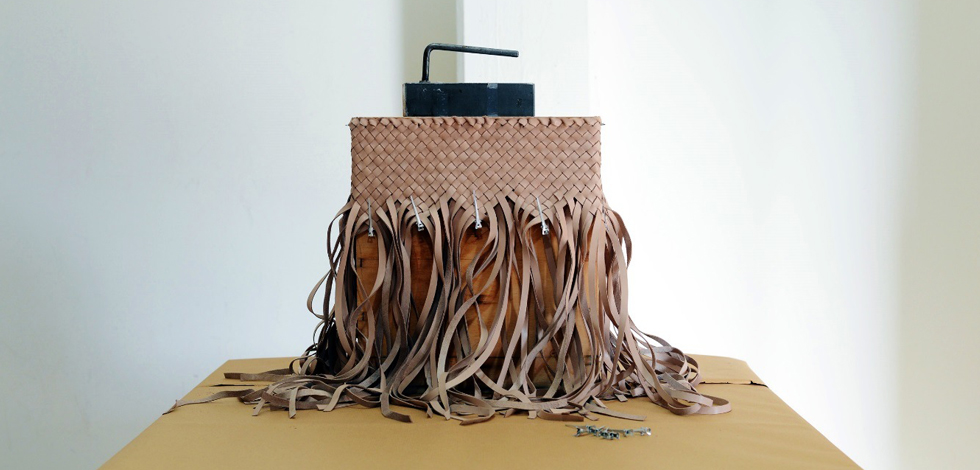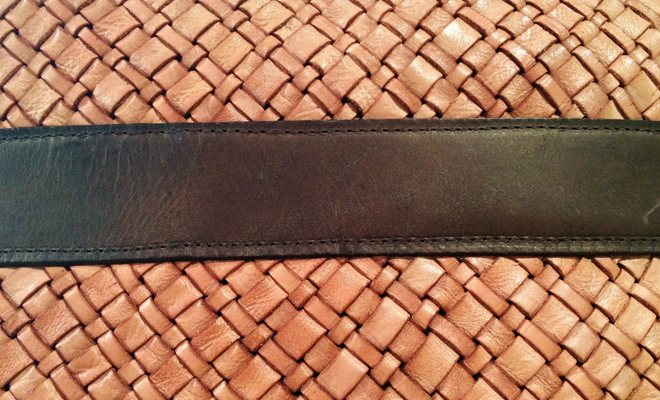How To: Hand-weave Leather Handbags with ELENA BERTON
If you’ve ever come across a beautiful woven leather bag, you’ve likely admired its form and craftsmanship. But have you ever stopped to wonder what goes into making such a bag? How are the materials made? How long does it take? Well we’ve got the answers to those questions courtesy of a guest post by Elena Berton who provides insight into how to hand-weave unique leather handbags that will stand the test of time and develop their own special look that tells the story of their journey…
A handmade leather object is simply unique. Only those masters of their craft with years of expertise are able to breathe new life into a piece of leather, and to transform it into a bag and lifelong companion. Those precious leather objects accompany me every day, the leather touches my body, shares my every movement; my hands stroke its surface and over time, their warmth will give the bag its special patina – it will become uniquely mine.
At the roots of my passion for creating such extraordinary objects is the cooperation with the artisans who make it. Masters of their craft with endless patience, skills and a unique sense for the right material and its manufacture, they pursue ancient techniques that in times of hyperconsumption create an entirely different kind of fashion. Our hand-woven bags are the core product of our brand, destined for strong, beautiful and unique women who appreciate the origin and values of a product and who make it part of their own identity.
Before the actual hand-weaving can start, the leather is tanned in a complex and strictly organic procedure using extracts from tree barks in order to guarantee the leather’s exceptional quality and lifelong resilience.
1) One handbag requires up to 160 metres of leather strings. Every string is cut by hand and of all the ready-cut ribbons, only the uniformly thick ones are chosen for the manufacture. The aim is to guarantee perfect grain and consistency in the pattern of the handbag.
2) Every string is measured in its length and width, which is adapted to the desired size of the bag. The coloration is also controlled following the initial tanning step. However, no two bags have exactly the same colour and even slight differences in sizes might occur – every single bag is truly one-of-a-kind.
3) The hand-weaving is done from top to bottom, starting with the upper border. We start with two strings crossed over each other. A third one is added, creating a grid pattern.
4) The long upper ends are then crossed down, one by one, where each long leather string incorporated in the upper border will ultimately create a 90-degree angle. One additional string is added for each string that is crossed down. The lose ends will be used in the next step of weaving the body of the bag. Being able to complete a perfect border is a sign of excellence among the craftsmen; it has to be of a high standard in order for the rest of the weaving to attach properly.
5) The upper border is woven around a wooden trestle, which serves as a base for the entire weaving. We always use the trestle that has the size and shape of the desired bag. The shape of the trestle helps to give an initial form to the bag. Starting from the upper border, the weaving begins in a circular motion. Take the second and adjacent third string and cross one over the other. Repeat the same step with the fourth and fifth and continue so. Once you have made the first round and crossed each string once, the second round begins where you will start with string two crossing string five. Essentially the secret is that for each string in each round you can only complete one crossing motion. This results in the tremendous expenditure of time that is necessary to achieve our intricate patterns. These steps continue round for round, crossover for crossover until the desired height of the bag is achieved. Throughout this step, close attention has to be paid as this is the only time during which mistakes could be corrected.
6) The process of weaving the body of the bag can take up to 35 hours (for our largest hand-woven Firenze bag where even the handle is woven by hand). Patience is thus just as important as accuracy in order to not make mistakes, as there is no easy fix to an error once woven into the leather. The perfect structure can only be achieved when constant but balanced tension is executed.
7) Once the body of the bag which is woven in its entirety is finished, the open ends at the bottom have to be sewn together which creates the final shape of the bag. The seams at the bottom are hidden beneath a wider strip of robust leather in order to protect them, essentially for all eternity. All seams are further checked to ensure stability and avoid damages.
8) The interior of the bag is finished in soft canvas in order to maintain the lightness that is one of the key features of our bags. Despite the outstanding leather quality, our bags are far from heavy and their careful finishing makes them the perfect companion for every use.
9) The technique of our artisans is deeply embedded in the Tuscan culture. Proof of the very same patterns that are now our bags can be found in ancient chronicles and paintings where the weaving was still performed with straw and strings of gold to create products for the elegant European public.
10) Just as importantly, basketry reveals the identity of its creator – every hand weaves differently and every pattern carries the invisible signature of the artisan who created it.
11) Hand-weaving a bag creates a unique and precious product which will carry the stories of all those hands that have shaped and woven it. It represents the opposite of products created under conditions of mass production and you will shape something that will express your very own identity.





 Carry Awards
Carry Awards Insights
Insights Liking
Liking Projects
Projects Interviews
Interviews























